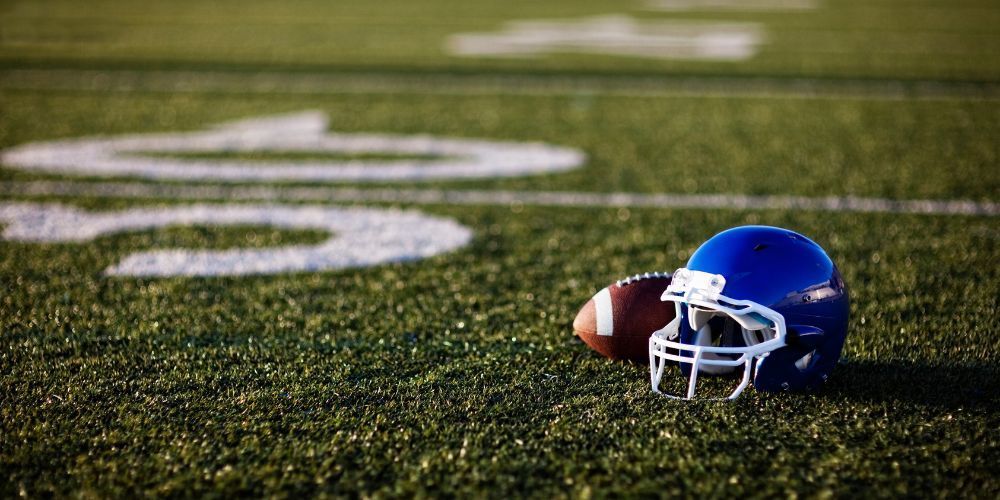How to Avoid Trap Games in Your Survivor Pool
William Flaiz • May 22, 2025
The biggest enemy in your survivor pool isn't the worst team in the NFL—it's the "sure thing" that isn't so sure. Trap games eliminate more survivor pool entries than genuine upsets, and they follow predictable patterns that sharp players learn to recognize.
Most casual players approach survivor pools like weekly fantasy lineups, picking the biggest favorite without considering context. That approach works until it spectacularly doesn't. The teams that look safest on paper often carry the highest elimination risk when you dig deeper.

What Makes a Game a "Trap"
A trap game occurs when public perception dramatically overvalues one team's chances of winning. The betting markets, survivor pool popularity, and casual analysis all point toward an "obvious" choice that carries hidden risk.
Classic trap game scenarios include:
- The Emotional Letdown Spot: Teams coming off huge wins, especially prime-time victories or rivalry games, often struggle with focus the following week. The 2023 Cowboys went 40-0 against the Giants on Sunday Night Football, then lost to the Cardinals as 16-point favorites six days later.
- The Look-Ahead Trap: When teams have marquee matchups the following week, they sometimes overlook inferior opponents. Players and coaches are human—their attention naturally drifts toward the bigger game ahead.
- The Desperate Opponent: Bad teams aren't always easy wins, especially when they're fighting for their coach's job, playoff lives, or simple pride. Teams with nothing to lose often play their most inspired football against superior opponents.
- The Public Darling: When 70%+ of survivor pools pick the same team, that's not wisdom of crowds—that's groupthink. Heavy public backing often correlates with trap potential, especially when the favorite has underlying vulnerabilities.
Reading the Warning Signs
Smart survivor pool players develop pattern recognition for dangerous spots. Here are the red flags that should make you pause:
Betting Market Discrepancies
Pay attention when survivor pool popularity doesn't match betting market confidence. If 65% of pools are taking Team A, but their spread has moved from -7 to -4.5 during the week, sharp money is fading the public choice for good reason.
Line movement tells a story. When spreads shrink despite heavy public betting on the favorite, professional handicappers see something the masses don't. Trust the money over the crowd.
Recent Performance Context
Dig beyond win-loss records into how teams have been winning or losing. A 3-1 team that's been winning close games against weak opponents might not be ready for a step up in competition. Meanwhile, an 0-4 team that's lost by a combined 12 points to quality opponents could be ready to break through.
Injury reports matter, but so does the timing of when players return. Teams often struggle to reintegrate key players, especially on short weeks or in complex game plans.
Motivational Mismatches
Human psychology drives NFL outcomes more than fans realize. Teams with everything to play for against teams with nothing to lose create dangerous dynamics. December games between playoff contenders and eliminated teams consistently produce more upsets than statistical models predict.
Division games carry extra motivation regardless of records. Bad teams playing spoiler against division rivals have ended countless survivor pool runs. The 2022
Colts were 4-12-1 but still managed to beat the
Titans in Week 18, eliminating numerous survivor entries.
Strategic Approaches to Trap Avoidance
The Contrarian Mindset
When everyone zigs, consider zagging. If public consensus builds around one "obvious" pick, explore alternatives that offer similar win probability with less elimination risk.
This doesn't mean being contrarian for its own sake—it means recognizing when popular wisdom has blind spots. The goal isn't to be different; it's to be right when others are wrong.
Value-Based Team Management
Think of your season as a portfolio of 17-18 teams rather than 17-18 individual picks. Premium teams like the Chiefs, Bills, or 49ers are finite resources that should be deployed strategically, not burned on trap-prone spots.
Save elite teams for weeks when you genuinely need their win probability, not weeks when decent alternatives exist. A 85% win probability team used in Week 4 can't help you in Week 16 when you desperately need that same edge.
The Two-Week Test
Before committing to any pick, examine their following week's matchup. Teams with difficult upcoming games often struggle with focus and effort against inferior opponents the week prior.
This is especially relevant for teams facing division rivals, playoff contenders, or revenge games the following week. Their preparation and emotional energy might already be shifting forward.
Building Anti-Trap Pick Strategies
Diversification Over Dominance
Instead of riding one great team all season, diversify across multiple good teams. This approach provides more flexibility and reduces reliance on any single team avoiding trap games.
Consider teams in the 75-80% win probability range rather than always chasing 85%+ favorites. The marginal improvement in win rate often doesn't justify the additional trap risk and reduced future flexibility.
Matchup-Based Analysis
Focus on specific matchup advantages rather than overall team quality. A team with elite run defense facing a one-dimensional rushing attack might offer better value than a superior team with exploitable weaknesses.
Stylistic matchups matter more than power rankings. Teams built to stop the run struggle against elite passing attacks, even if they're the "better" team on paper.
Timing Advantages
Use knowledge of trap game patterns to identify optimal deployment windows for premium teams. Elite teams facing desperate opponents in emotional spots should be avoided when possible.
The best time to use top-tier teams is in neutral matchups where their talent advantage can manifest without psychological complications. Mid-season road games against average opponents often provide the cleanest win paths.
Week-by-Week Trap Patterns
Understanding seasonal trap patterns helps with long-term planning:
- Early Season (Weeks 1-4): Preseason expectations often don't match reality. Teams with "easy" early schedules might be overvalued before establishing true form.
- Mid-Season (Weeks 5-12): Injury accumulation and roster uncertainty create the most trap opportunities. Teams dealing with key injuries often get overbet based on past performance.
- Late Season (Weeks 13-18): Motivation mismatches peak as playoff pictures clarify. Eliminated teams playing spoiler represent maximum trap potential.
Advanced Trap Detection
Market Efficiency Analysis
Compare survivor pool popularity percentages to implied win probabilities from betting markets. Significant disparities often identify trap or value opportunities.
When survivor pools heavily favor Team A, but betting markets suggest Team B offers similar win probability, Team B becomes an excellent contrarian play with similar upside but lower elimination risk if wrong.
Historical Precedent Research
Track how specific franchises, coaches, and situations have performed in similar spots historically. Some teams consistently struggle in letdown spots, while others thrive as underdogs.
Coaching tendencies matter enormously. Coaches with strong motivational skills often get maximum effort from overmatched rosters, while others struggle to maintain focus during emotional transitions.
Tools and Resources for Trap Identification
Data Sources Beyond Box Scores
Advanced metrics like DVOA, EPA per play, and turnover luck provide context that raw statistics miss. Teams with unsustainable early-season success often regress at predictable times.
Strength of schedule adjustments reveal which teams have faced legitimate competition versus cupcake schedules. A 4-0 team that's played four bottom-10 defenses isn't the same as a 3-1 team that's faced elite competition.
Betting Line Movement Tracking
Monitor line movement throughout the week, not just opening and closing numbers. Sharp early money often identifies trap potential before public betting begins.
Reverse line movement—when lines move opposite to public betting percentages—almost always signals professional disagreement with popular opinion.
How can I tell the difference between a trap game and a genuine upset?
Trap games involve favorites that appear safer than they actually are due to public perception, emotional spots, or motivational factors. The warning signs are usually visible in betting line movement, recent performance context, and situational analysis. Genuine upsets are random variance that's harder to predict—bad teams occasionally beat good teams without underlying reasons. The key is identifying when favorites carry hidden risk versus when they're legitimately dominant. Focus on situations where the betting markets disagree with survivor pool popularity, teams in emotional letdown spots, or motivational mismatches between desperate and comfortable opponents.
Should I always fade the most popular survivor pool pick each week?
No, being contrarian just for the sake of being different is a losing strategy. The most popular pick is often popular for good reason—they genuinely offer the best combination of win probability and strategic value. The goal is identifying when popular wisdom has blind spots, not opposing it reflexively. Look for weeks when public consensus builds around teams with obvious trap game characteristics: emotional letdown spots, look-ahead scenarios, or desperate opponents. When the most popular pick offers legitimate value without red flags, there's no reason to avoid it. Smart contrarian play means recognizing when everyone else is missing something, not being different for its own sake.
What's the best way to save premium teams while still avoiding trap situations?
The key is balancing immediate safety with long-term flexibility. Start by identifying 8-10 teams you're comfortable using throughout the season, then map out their optimal deployment windows based on their schedules and trap-avoidance principles. Premium teams should be saved for neutral matchups where their talent advantage can manifest cleanly—typically mid-season road games against average opponents without emotional complications. Avoid using elite teams in obvious letdown spots, look-ahead scenarios, or against desperate opponents fighting for their season. When facing a potential trap game, look for teams in the 75-80% win probability range rather than burning a premium asset. This approach provides multiple escape routes if your preferred strategies encounter unexpected complications.











